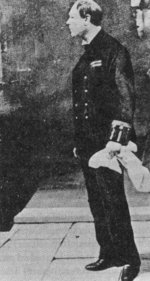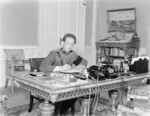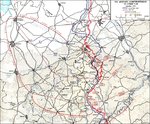
Belgium
| Full Name | 17 Kingdom of Belgium | |
| Alliance | Allies - Minor Member Nation or Possession | |
| Entry into WW2 | 10 May 1940 | |
| Population in 1939 | 8,387,000 | |
| Military Deaths in WW2 | 12,100 | |
| Civilian Deaths in WW2 | 76,000 | |
| - Civ Deaths from Holocaust | 24,387 |
Contributor: C. Peter Chen
ww2dbaseAt the end of WW1, Belgium emerged on the victorious side, but the country was devastated after years of occupation and war. After receiving Rwanda and Burundi from Germany as war reparations and surviving through a period of prejudice (sometimes violent) prejudice against Germans living in the country, Belgium became a stern neutral nation in the 1930s. When the European War began in Sep 1939, the Belgian government reiterated its neutral stance on 3 Sep 1939. Two months later, on 7 Nov, the King Léopold III of Belgium and the Queen Wilhelmina of the Netherlands jointly declared their nations' neutrality but the willingness to act as intermediaries for peace negotiations. On 10 May 1940, Germany invaded the Low Countries, which included Belgium, despite Belgian neutrality; the German invasion was quickly followed by the arrival of French troops. The Belgian defense at the Meuse River and Albert Canal region was centered around the mighty fortress of Eben Emael, which was manned by 1,200 troops; German glider troops, however, landed in surprise and disabled the guns of the fortress using shape charges, quickly rendering the fort nearly useless in their intended role of covering the main defense line, KW; the fort was captured on 11 May. Despite this loss, the Belgian forces continued to resistance at the KW line, causing German casualties, surrendering only after all Allied troops in Belgium were encircled in late May. King Léopold III surrendered on 28 May and remained in Belgium as a prisoner, both actions were against the advice of the Belgian government, which eventually fled to Bordeaux, France to act as a government-in-exile, joining the Allies. On 18 Jun, the government-in-exile called for King Léopold III to abdicate.
ww2dbaseUnder German occupation, the first deportation of Belgian Jews began on 4 Aug 1942, most of whom were sent to Auschwitz Concentration Camp in Poland. During the war, 25,631 Belgian Jews were deported; of that number, only 1,244 survived the Holocaust. The non-Jewish Belgian population was generally helpful toward the Jews in the country; it was estimated that more than 25,000 Jews were able to escape deportation after being given hidden shelters, often in private homes, by non-Jews.
ww2dbaseThere were several armed resistance groups operating in occupied Belgium. The Netwerk van de weerstand - Réseau de Résistance and the communist-leaning Independence Front were among the largest. Because many major rail lines travel through Belgium between Germany and France, Belgian Resistance members were able to supply the Allies intelligence on German troop movements, while saboteurs were also able to destroy key railways on many occasions. Among most successful attacks was the destruction of the rail bridge over the Ambleve River, which resulted in a German troop train crashing into the river, killing the entire train load of 600 men. Resistance groups also sheltered downed Allied airmen during the war, utilizing a series of safe houses called the Comet Line to get the Allied airmen to friendly territory. More than 1,000 Belgian Jews were said to have been members of the Belgium Resistance.
ww2dbaseAllied troops landed in Western Europe in 1944, reaching Brussels in Sep 1944. The port city of Antwerp and its surrounding areas became a contested region, but by 10 Dec it was firmly in Allied hands. Much of the German Ardennes Offensive, named Battle of the Bulge by the Allies, also took place in Belgium. All the fighting devastated Belgian cities and towns, requiring many years after the war to recover despite Belgium receiving funds from the post-war Marshall Plan recovery program.
ww2dbaseThe Belgian firm Union Minière du Haut Katanga, operating in the Belgian colony of Congo in Africa, had access to the largest known uranium reserve in the world at the time; the company's leadership provided the United States large quantities of uranium for the Manhattan Project effort to create an atomic weapon.
ww2dbaseAfter the war, Belgium became one of the original members of the United Nations.
ww2dbaseKing Léopold III's refusal to leave the country in 1940 gathered criticism after the war, with some accusation that he had willingly collaborated with the Germans. As a result, he was unable to return to Belgium after the end of the war (having been moved to Germany in 1944 prior to his country's liberation). He went into exile in Switzerland while his brother Prince Charles was established as the regent. In 1950, he finally returned to Belgium, but the political tension escalated dramatically over his conduct over the war. Although a national referendum held in 1951 resulted in his favor, the margin was so narrow that King Léopold III abdicated to avoid further escalation of the situation. His son assumed the throne as King Baudouin I in Jul 1951.
ww2dbaseSource: Wikipedia
Last Major Update: Nov 2010
| Events Taken Place in Belgium | ||
| Invasion of France and the Low Countries | 10 May 1940 - 22 Jun 1940 | |
| Bombing of Cities in France and Low Countries | 1 Jul 1940 - 7 May 1945 | |
| V-Weapons Campaign | 13 Jun 1944 - 30 Mar 1945 | |
| Liberation of Belgium | 2 Sep 1944 - 2 Nov 1944 | |
| Battle of Hürtgen Forest | 19 Sep 1944 - 10 Feb 1945 | |
| Battle of the Scheldt Estuary | 2 Oct 1944 - 8 Nov 1944 | |
| Battle of the Bulge | 16 Dec 1944 - 28 Jan 1945 | |
| Weapons | ||
| Browning Hi-Power Handgun | FN M1910 Handgun | |
| Facilities | ||
| Fort Breendonk | Prison Camp | |
Photographs
 |  |
 |  |
Belgium in World War II Interactive Map
Please consider supporting us on Patreon. Even $1 per month will go a long way! Thank you. Please help us spread the word: Stay updated with WW2DB: |
Visitor Submitted Comments
3 Mar 2016 12:02:36 PM
I hope you find what you're looking for! I'm just a random person who read the article posting this, and I've got no idea how to help you, but I thought I'd extend to you some optimism.
Good luck in your quest!
20 Apr 2016 07:51:41 AM
Can you tell me please which canal had at least 2 of its' bridges destroyed during WW2, it was about 9-10 Kms from DePanne, and prevented my father from rejoining his Unit to go to Dunkerque. He had to walk. Thank you. Norma GOUGH
28 Dec 2016 08:51:32 PM
My Father was a Staff Sgt. in the USArmy and participated in
the battle(s) to gain freedom for
the Antwerp area. He had a certificate stating he was given the "key to the City"... wonder how/why and if anyone has any info on this matter.... My Sister has the certificate.
6 Jan 2017 02:59:47 PM
Im looking for a leon formaszewicz or formuszewicz who waz a soldier in belgin army .was in Germany around1945 met my nan raisa kissljuk there when she was in a displaced migrants camp
21 Mar 2017 08:34:27 AM
I really like this website because it helped me in my research paper. Thanks to C. Peter Chen
2 May 2017 08:31:05 AM
My Grandma (Noella Lanssens) was in the 21st Army Group as a nurse and awarded a medal from Field Marshal Montgomery. I was wondering if anyone had pictures of nurses from this group? Or anything that might help me on my research? Thank you.
Also my Grandfather was part of the underground (Gilbert Goddeeris) was captured and a prisoner of war (survived and is 92 1/2 today). Any info on him would be great too as he doesn't like to talk about it. Thank you.
17 Jul 2017 02:57:09 PM
My uncle Fernand Jacquart was from Couliet, Belgium. During WWII, at age 16 or 17 years old he was taken to Germany as a laborer. I think he died in 1945 in Jesterburg, Germany. I would like to get more information.
21 Aug 2017 01:18:24 AM
Hi, my grandmother and her family were active with the Belgian restistance. I have been handed a book with names and addresses of soldiers who they helped including some really good drawings of the times. I wondered if there was any details of the activities, dates and locations of operations or lists of names I could access to fill in the blanks. Thanks. Simon
7 Nov 2017 01:53:33 AM
It is strongly suspected my grandmother was a member of the Belgium resistance. So you have any advice as to how I might be able to corroborate this? Thanks
7 Feb 2018 02:13:00 AM
My Father was in the Royal Engineers and his unit was one of the first to enter Brussels when it was liberated. He stayed with the Family of Richard Capelle, and they stayed friends even after my Father came home. I would love to find out where his family is and if they remember my family.
27 May 2018 04:12:14 AM
Is there any one out there who knows any one at 30 Rue Wery Brussels. I found this address after my husband died and it is to do with WW11. He was in MI 9 and I have put a website up to try to find out more info, it is MI9-is9.com A Husbands Most Secret War. The address is written on a printed card with the names Luciene Laame and Helene C. Ghigo do these names ring a bell to anyone. A picture of the card is one the website.p
28 Jul 2018 02:00:43 AM
I am looking for a lost pilot who was according to the information already collected he was shot down on the 16th. May possibly by ground fire or from actively in air combat with a Heinkel which was over a convoy of German vehicles carrying ammunition in the vicinity of Hamme Mill, 7 miles southeast of Louvain. From reports there was no one who seen him come down or actually saw the aircraft crash.
My reasons for the enquiry is that the pilot Squadron Leader Patrick Gifford was the pilot who shot down the first enemy aircraft over the UK in the last war, not only that but it was the first Spitfire of all the Spitfires built to shoot an enemy aircraft down over British soil. I am trying to piece the whole incident together for the launch of a limited edition picture of a painting of his aircraft flying over the world famous rail bridge over the river Forth in Scotland. Any information will be of interest and I if required will attend any meeting to receive or collect it.
Kind regards
Wg Cdr W.T.S.Neish MBE CFM RAF VR Rtd.
17 Nov 2018 01:40:18 AM
Dear Wing Cdr Neish.
I live just south of Brussels, so the location is about 40km from me.
I can certainly help out with local enquiries. I have friends who are ex-Belgian airforce also, one of whom lives in Leuven.
Do you have more information?
26 Feb 2019 04:05:51 PM
It is so easy to find information about allies but nowhere have I found so far info on Belgian soldiers who got killed in the war. I have an uncle (Belgian soldier) who died in Essen on 28 May 1943 Desiree Ceulemans. Is there anywhere we are able to find out anything about this. Also there are so many military cemeteries in Belgian for the allies. Why was he buried in a civilian cemetery. I am just curious. Kind regards and thank you
7 Dec 2020 09:09:04 PM
I am looking for information on my Grandfather, "Louise or Louie Cools" he was in the Belgium army, ww2, his uniform had a red star on the lower shoulder. He was captured by the Germans. I know that when he was captured he would brake out of the camp so he could find food to bring back. He moved to Australia in the 50s/60s
6 Jan 2021 12:44:25 PM
I have tried to look up about my grandmother Josephine Wilms who was with the resistance in ww2 .She was decorated for her work she had done ,but I can’t find anything about her .I know her password was pip.
27 Dec 2021 04:32:22 PM
I am looking for information on Leon Kuhn He was a furrier in Antwerp. Thanks
26 Jan 2022 05:53:21 AM
Je cherche à savoir qui fut le dénonciateur de Frédéreic de Jongh (réseau Comète). J'ai trouvé deux noms: Dezitter ou Jacques Desoubrie...
All visitor submitted comments are opinions of those making the submissions and do not reflect views of WW2DB.

- » Wreck of Teruzuki Found (27 Jul 2025)
- » USS Orlean's Bow Found (22 Jul 2025)
- » The Emperor of Japan Planned to Honor WW2-era Japanese POWs in Mongolia (4 Jul 2025)
- » US State Lawmaker John Winter Caught Using Racial Slur "Jap" and Apologized (11 Jun 2025)
- » US Government Plans to Purge WW2 Information (17 Mar 2025)
- » See all news
- » 1,182 biographies
- » 337 events
- » 45,115 timeline entries
- » 1,248 ships
- » 350 aircraft models
- » 207 vehicle models
- » 376 weapon models
- » 123 historical documents
- » 261 facilities
- » 470 book reviews
- » 28,413 photos
- » 365 maps
James Forrestal, Secretary of the Navy, 23 Feb 1945
5 Jan 2016 09:08:24 AM
Dear sir or team, this is a great site, I really enjoyed looking at it, reading articles. However, what I am going to ask you is not what you might expect. Can you possibly suggest me where to turn to to find some information of a Belgian who was in Germany (Nuernberg or somewhere near) between 1943-45. I have a photo of him, with his signature. All I know about him are his name and surname. I deeply apologize for bothering you with a request that is probably not your concern. However, I thank you in advance for an answer.
With best wishes
Magdalena Cundric